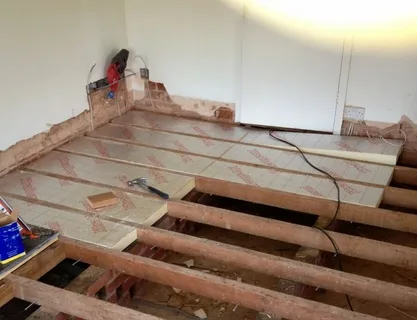What Are The Different Types Of Underfloor Insulation?
So you’ve decided to improve the comfort of your home? Excellent. If the floor is the problem, you could consider insulating it. The type of underfloor insulation you choose will depend on several factors, including how warm you want it to be, whether or not it needs to be soundproofed and what’s available in your area. We’ve put together a guide on the different types of underfloor insulation Christchurch for you to take a look at before making your decision!
Cellulose
Cellulose is made from recycled paper and can be blown into the cavity. It’s a good option if you want to reduce your carbon footprint, but it’s not the best choice if you are concerned about dust in the home or are planning to sell your house soon.
This material is made of recycled plastic and comes in pillows that are easy to pop into the cavity. It’s a good choice if you want something that will last a long time, but it may not be ideal for homes with small children or pets because some types of polyester fillers contain allergens.
Rigid foam boards
Rigid foam boards are the most commonly used type of underfloor insulation. They’re made from expanded polystyrene (EPS) or extruded polystyrene (XPS).
The choice between these two materials depends on your budget and the space you have to insulate. If you’re tight on cash, EPS is usually less expensive than XPS. If you have more room in your budget and want something more eco-friendly, XPS may be a better option for you.
Loose fill underfloor insulation
Loose fill underfloor insulation is the cheapest option, and it can be blown into the cavity with a pneumatic blower. However, this type of installation is not easy to do yourself so it’s best to hire a professional if you’re not confident in your DIY skills. This type of insulation is suitable for use in all types of flooring: timber floors, concrete slabs and floating floors (where the subfloor has been insulated).
Micro-cellular foam sheets
Micro-cellular foam sheets are a type of insulation that uses air bubbles to fill the gaps between your floorboards. This type of insulation is ideal for areas where you have a lot of space between your floorboards and there aren’t too many obstructions, such as joists or beams. The bubbles expand when they come into contact with heat or cold, which helps them fill up any gaps between the floorboards and create an effective seal against drafts.
The main advantage of micro-cellular foam sheets is their ability to effectively insulate large spaces without being affected by small changes in temperature (unlike other types), making them ideal for use in homes with underfloor heating systems that require more precise control over temperature levels throughout different rooms within the house.
Conclusion
Underfloor insulation Christchurch is a great way to make sure your home is as energy efficient as possible. Not only does it keep your home warmer in winter and cooler in summer, but it also helps reduce noise from outside sources like traffic and trains passing by on their way to work. The best part about underfloor insulation is that it can be installed easily without having to alter any of the other surfaces within your home’s floor plan, meaning no disruption during construction time!

